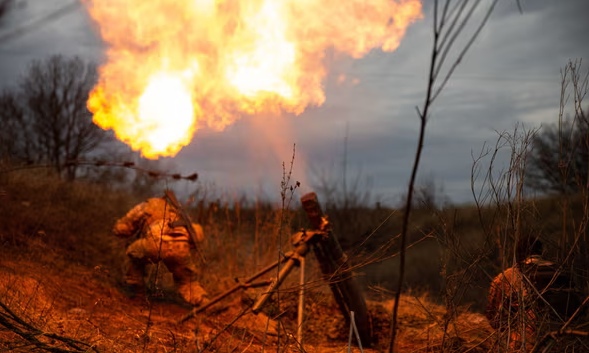Neither the Ukrainian president nor the military command wants to take responsibility for the mobilisation. However, Zelensky recently named the exact number of people who want to be drafted into the Ukrainian Armed Forces. In response, Zaluzhny criticised him for “divulging military secrets”, the Financial Times reports.
As Ukraine prepares for the third year of its military confrontation, it now needs to significantly increase the size of its army.
But given the risk of a sharply negative public reaction, the task of recruiting people into the country’s armed forces has become an extremely sensitive issue that Ukraine’s top military commanders and political leaders are trying hard to pass on to each other.
Neither of them seems to want to take full responsibility for the conscription of hundreds of thousands of Ukrainians, who mostly do not want to risk their lives and health in a difficult and exhausting military conflict.
On 19 December, during his press conference, Volodymyr Zelensky stirred the society with his statement on mobilisation: the command of the Ukrainian army demanded that 450-500 thousand people should be drafted into military service. And his statement turned out to be quite remarkable in two respects.
Firstly, President Zelensky voiced specific figures for the first time. Since the beginning of the war in February 2022, the Ukrainian authorities have kept secret the data on the number of those whom they drafted into the army and who joined it voluntarily. Nor have they disclosed the number of casualties.
Secondly, Zelensky emphasised that this was precisely the request of the top military command – a request that the president has not yet fulfilled. Before giving the go-ahead to conscript so many people, he would like to receive detailed information from the command about why so many fighters are needed and how it will affect the rotation of troops on the front line. He said:
“I need details. This is a very serious figure.”
Today, Ukrainian men aged 18 to 60 are banned from leaving the country and must register at military enlistment centres. However, under current rules, only men aged 27 and older can be drafted into military service. A draft law was published in December to lower this age to 25, as the rules governing mobilisation are in the hands of parliament.
However, Zelensky’s Servant of the People party does not seem to want to take responsibility for drafting this bill. Its deputies were ordered not to comment on the details of the draft law and to forward all questions from journalists to the country’s military command, the Ukrayinska Pravda website reported.
The day after the publication of the draft law on lowering the draft age, the commander-in-chief of the Ukrainian Armed Forces, General Valery Zaluzhny, had to defend it in a TV interview, as well as at his first press conference since February 2022.
Until that moment, Zaluzhny mostly tried not to attract media attention and keep a low profile, although there were still exceptions. In particular, in his November interview with the Economist, he said that the military conflict had “reached a stalemate” – a word that has become taboo in government circles and infuriated the president.
Trying to explain the need to lower the draft age, Zaluzhny said that the armed forces needed more men and that they had been involved in drafting the new bill, emphasising, however, that he himself was not responsible for all its details.
Answering a question about the number of 450,000-500,000 voiced by Zelensky, the general said that he “did not make any requests for any number” of servicemen. According to him, disclosing any figures is tantamount to divulging a military secret.
He also tried to emphasise that the armed forces had nothing to do with the provisions of the draft law on conscription of Ukrainians living abroad and on the introduction of tougher penalties for evaders. He explained that these issues should be dealt with by lawmakers. He added:
“We are the army and we should fight, not interfere in the lives of civilians.”
According to Maria Zolkina of the Democratic Initiatives Foundation in Kyiv, Zaluzhny needed to speak to explain the mobilisation campaign because “the political authorities tried to distance themselves from the move and shift responsibility for it to the military leadership”. Blaming the army for a potentially unpopular move was “ruinous and wrong”, Zolkina wrote on social network X.
Relations between Zelensky and the AFU commander-in-chief had been strained even before the autumn, when the failure of the Ukrainian forces’ counter-offensive sparked rumours of the general’s imminent resignation. According to some officers, significant disagreements between the two over strategy and tactics are to be expected going forward.
But some members of Zelensky’s entourage see Zaluzhny as a potential political rival who enjoys great popularity among ordinary Ukrainians. Convincing the country’s population of the need for mass mobilisation in order to continue the war of attrition will be extremely difficult.
Zelensky’s desire to share the burden of responsibility for the new wave of mobilisation with the country’s top military commanders shows that 2024 will be even more difficult both on the frontline and on the domestic front.
